Hares and Rabbits
Snowshoe Hare (Lepus americanus)
The snowshoe hare, one of our commonest forest mammals, is found only in North America. As their name suggests, they are equipped with extra large furry feet that allow them to travel over snow. Their hind legs are very strong giving them the power to jump as much as 3 metres at a time and travel up to 45km per hour.
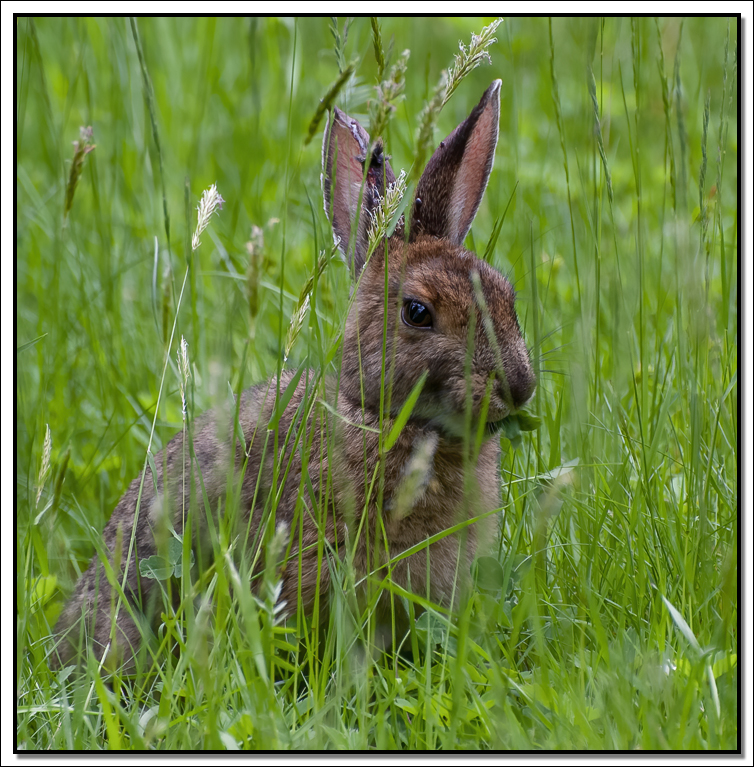
Snowshoe hares change colours with the season. In winter they become white to help them match to colour of snow. When spring comes, their fur becomes reddish brown to grey brown. They hide under the low boughs of trees and when motionless, they can be nearly impossible to detect.
Hares eat a variety of wildflowers, grasses and shrubbery leaves during the spring and summer. During the winter when fresh plants are scarce, they turn to twigs, bark, pine needles, moss and lichen.
The snowshoe hare is found in every province and territory in Canada as well as Alaska. It lives in the boreal forest and the southern extensions of this forest, along the Appalachian Mountains in the east and the Rocky and Cascade mountains in the west. The snowshoe hare is found as far south as North Carolina and New Mexico.
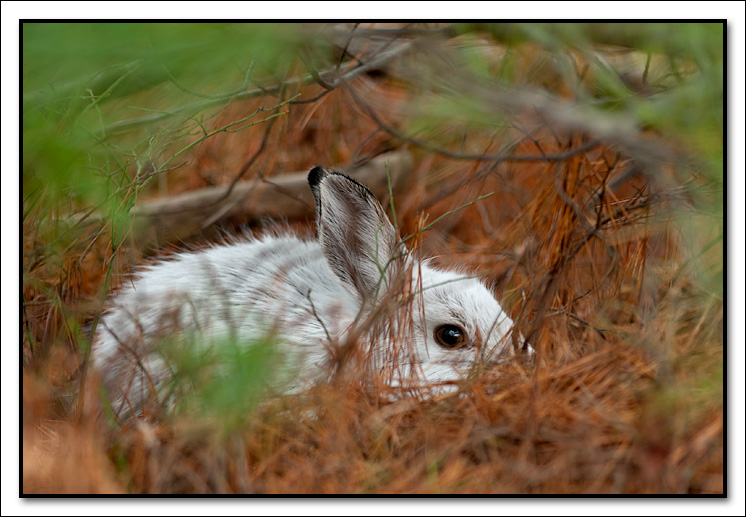
A Snowshoe Hare that changed to his winter coat before the snow arrived. This image was taken on mid-November in Algonquin Park, Ontario, Canada.
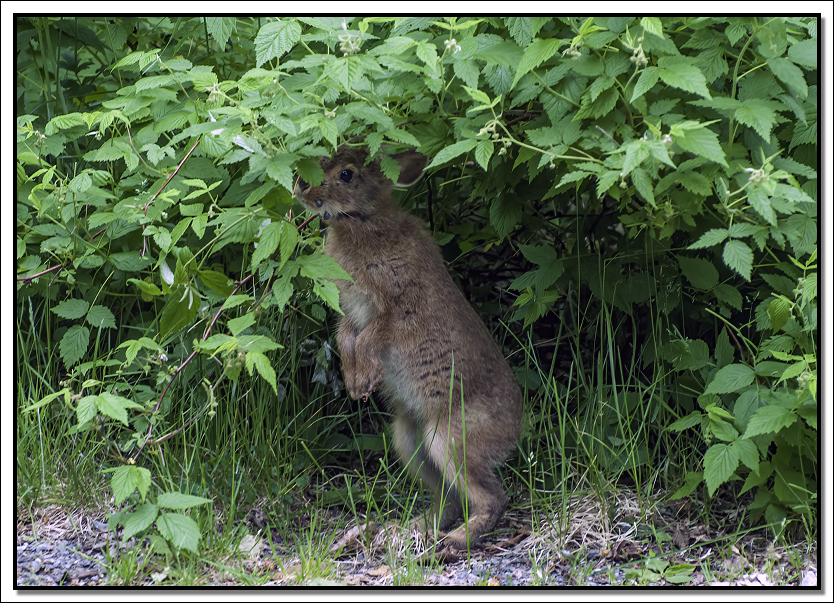
Snowshoe Hare standing on his hind feet to reach the richer foilage.
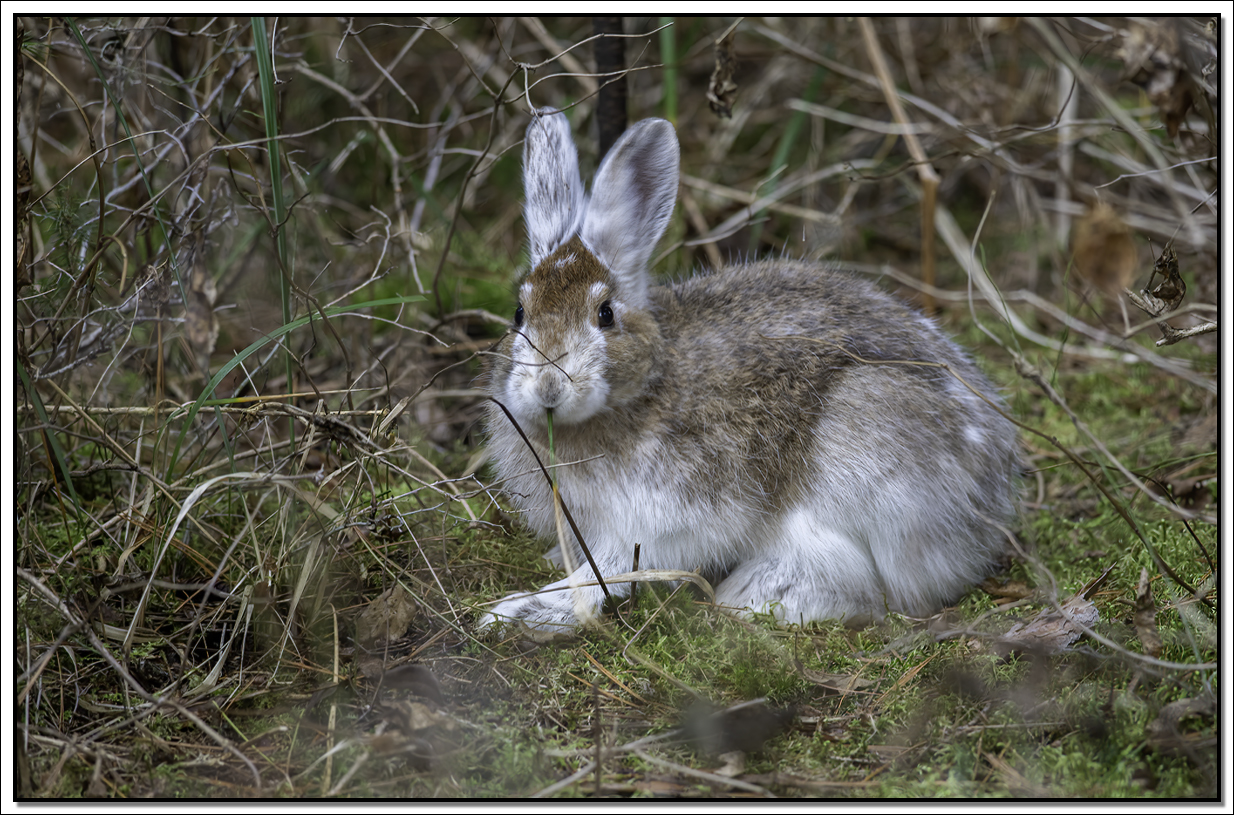
Snowshoe Hare whose coat is almost complete in changing to the winter coat.
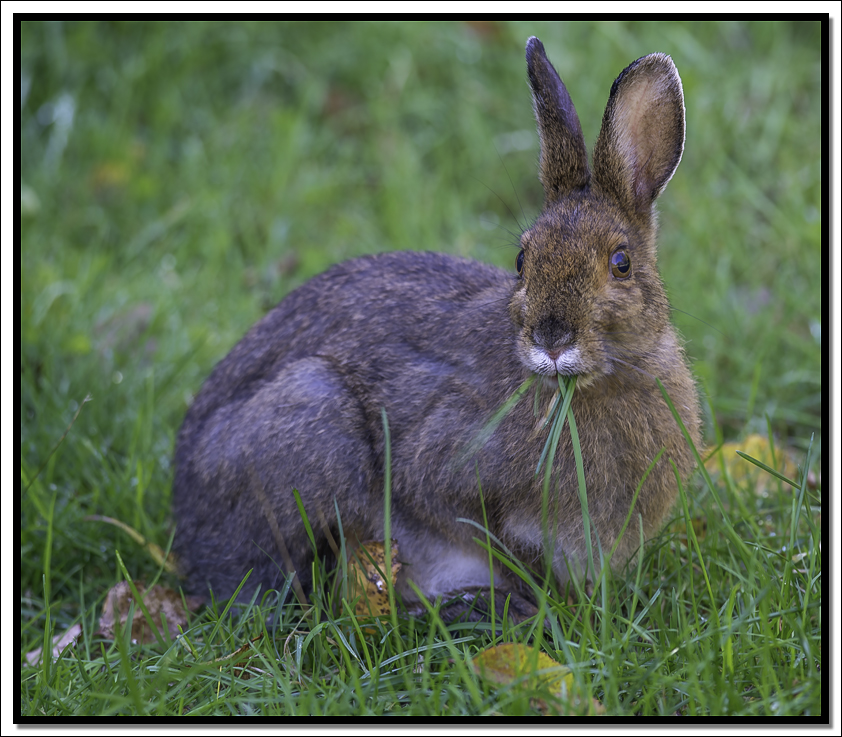
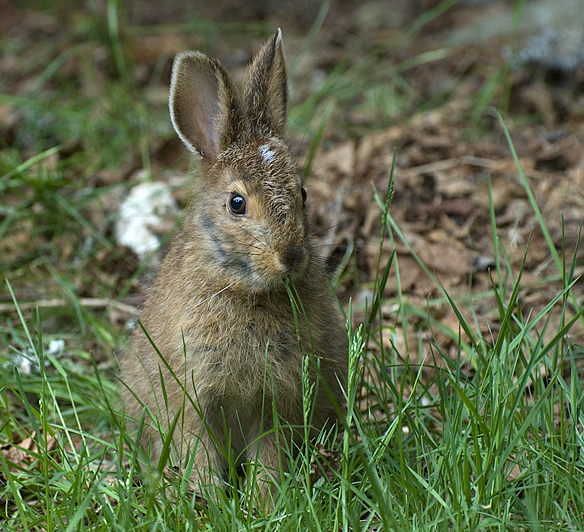
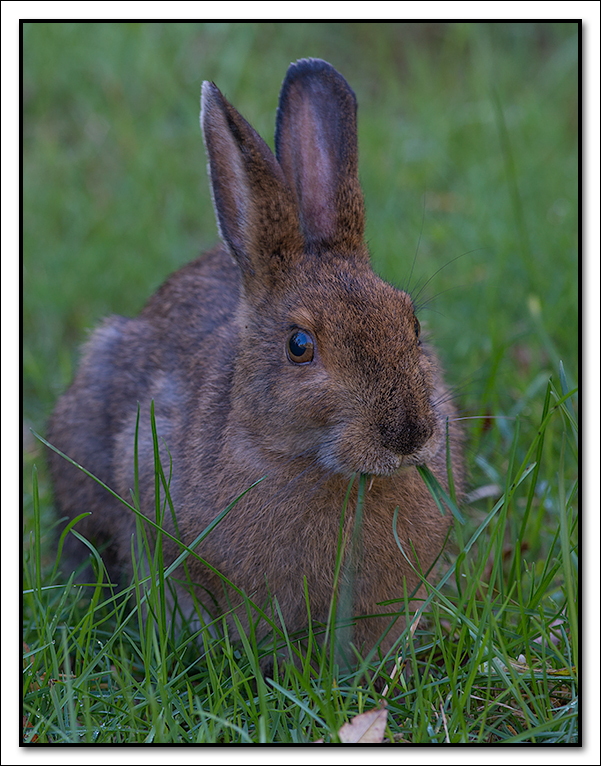
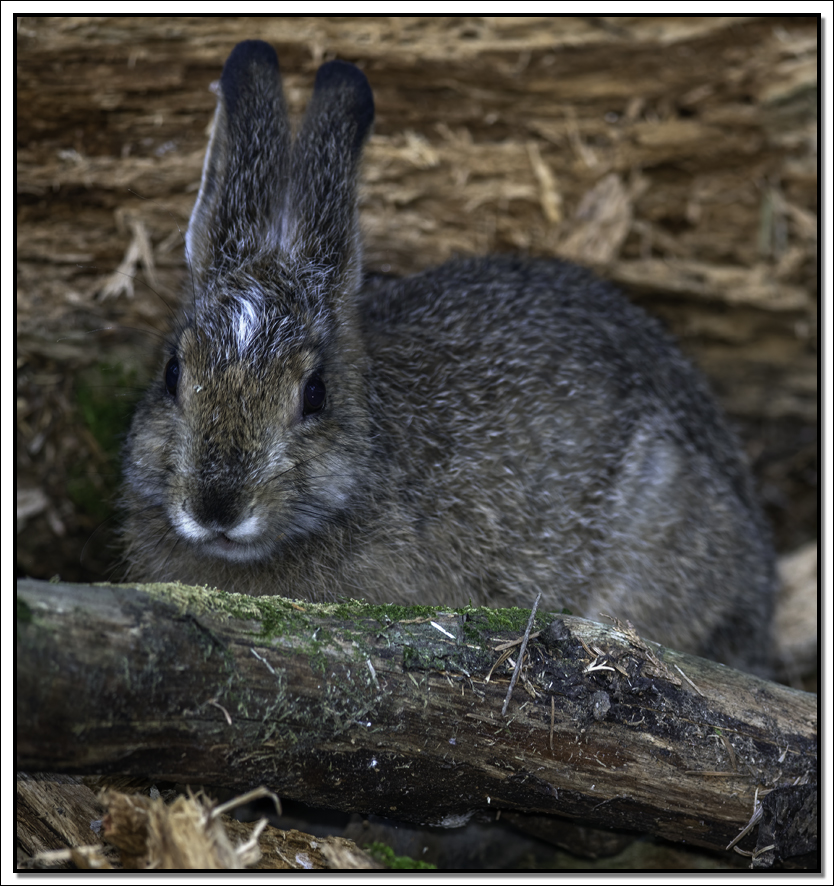
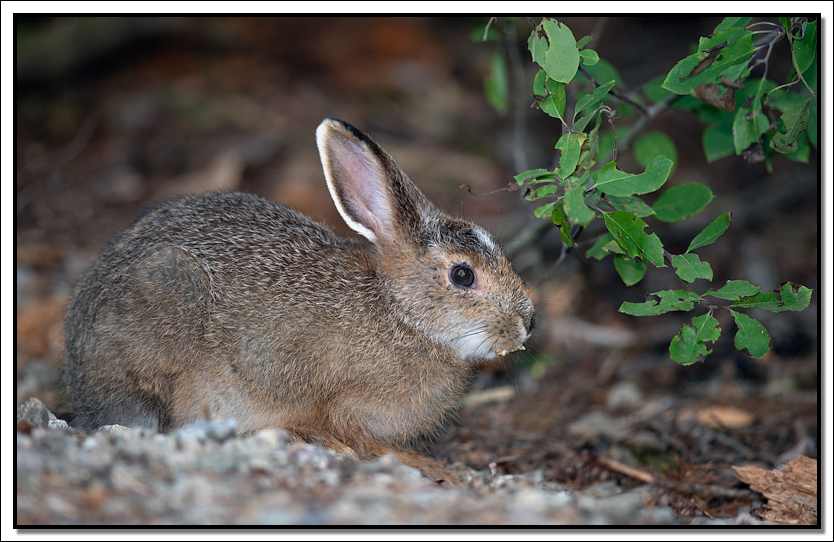
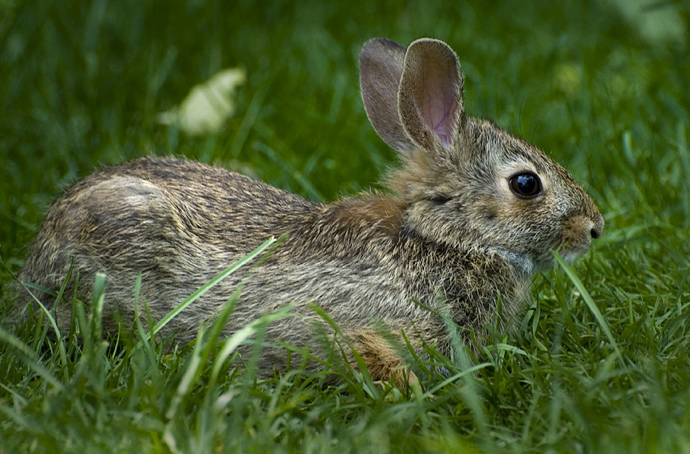
An Eastern Cottontail has a range south of the Shoeshoe Hare. In southern Ontario, this is the more common species as the Shoeshoe Hare's range is further north.

Rabbits on Grand Manan Island were obviously introduced. They look like strange domestic rabbits that are now roaming freely throughout the island.